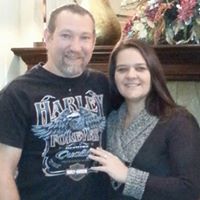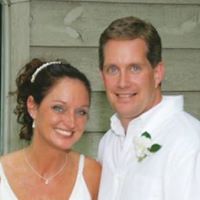Douglas Mark Riddle
age ~85
from Burlington, IA
- Also known as:
-
- Mark M Riddle
- Douglas M Riddle
- Mark D Riddle
- Dmark Riddle
- Riddle Dmark
- Riddle Di
- Phone and address:
-
12034 Sylvan Heights Rd, Burlington, IA 52601
3197532955
Douglas Riddle Phones & Addresses
- 12034 Sylvan Heights Rd, Burlington, IA 52601 • 3197532955
- Gladstone, IL
- Rowland Heights, CA
- Osage Beach, MO
- Rowland Heights, CA
Us Patents
-
Electrical Connector Assembly With Jackscrew Coupling
view source -
US Patent:54052700, Apr 11, 1995
-
Filed:Jul 18, 1994
-
Appl. No.:8/276731
-
Inventors:Douglas E. Riddle - Corona CA
-
Assignee:Hughes Aircraft Company - Los Angeles CA
-
International Classification:H01R 13627
-
US Classification:439364
-
Abstract:An electrical connector assembly includes two connector blocks that are coupled together by means of a jackscrew on one block that is screwed into a receiver on the other block. The jackscrew and receiver are formed from metal, while the remainder of the connector blocks are formed from a lower cost and lighter weight plastic. The receiver is held in place within a securing member in the second connector block, with the receiver and securing member having complimentary outer and inner polygon surfaces to keep the receiver from rotating. Axial receiver movement is prevented by a boss on the securing member that extends into a recess in the receiver, while the securing member is held against axial movement between a flange on one side and a securing cap on the other. The jackscrew is rotatably secured to the first connector block within a retainer that is held in place by sandwiching a portion of the connector block between a retainer flange and a securing cap that screws on over a threaded portion of the receiver. The jackscrew in turn has a flange that is lodged between the retainer and the cap to secure it against axial movement, while leaving it free to rotate.
-
Solderless Electrical Connector
view source -
US Patent:59717734, Oct 26, 1999
-
Filed:Apr 22, 1998
-
Appl. No.:9/064406
-
Inventors:Douglas Edward Riddle - Corona CA
-
Assignee:Packard Hughes Interconnect Company - Irvine CA
-
International Classification:H01R 909
-
US Classification:439 67
-
Abstract:An electrical connector has a flexible printed circuit for interconnecting a mother board and two daughter boards. The electrical connector includes a connector housing that is attached to the bottom of a heat frame that holds the two daughter boards. The connector is secured to the mother board. The flexible printed circuit is looped around a compression plate in the housing and attached to the heat frame and daughter boards at each end by compression assemblies that press gold dot contacts of the flexible printed circuit against the daughter boards.
-
Plcc Socket Mateable Connection
view source -
US Patent:52135128, May 25, 1993
-
Filed:Jul 24, 1992
-
Appl. No.:7/919463
-
Inventors:Ronald L. Campbell - Tustin CA
Douglas E. Riddle - Corona CA -
Assignee:Hughes Aircraft Company - Los Angeles CA
-
International Classification:H01R 909
-
US Classification:439 67
-
Abstract:An electrical connector device (10) is provided in which a first member (15) of dielectric material defines a four-sided recess having a bottom wall (20) and side walls (16), and a second member (24) of dielectric material which can fit inside the recess with its edges (25) spaced a predetermined distance from the side walls (16) of the first member (15). Tab portions (31, 32, 44, 45) of one or more flexible circuits (11, 12) are bent around the side walls (16) of the first member (15) and frictionally held between the wall (16) of the first member (15) and the edge (25) of the second member (24). Exposed conductors (29, 49) of the flexible circuit (11, 12) on the outside of the wall (16) can mate with conductors (75) in a socket connector (13). Alignment means (19, 26, 73) are provided to align the flexible circuits (11, 12) with the members ( 15, 24) of dielectric material and to align the latter two members and frictionally hold them together.
-
Electrical Connector Assembly With Jackscrew Coupling
view source -
US Patent:53563050, Oct 18, 1994
-
Filed:Apr 9, 1993
-
Appl. No.:8/044666
-
Inventors:Douglas E. Riddle - Corona CA
-
Assignee:Hughes Aircraft Company - Los Angeles CA
-
International Classification:H01R 13627
-
US Classification:439364
-
Abstract:An electrical connector assembly includes two connector blocks that are coupled together by means of a jackscrew on one block that is screwed into a receiver on the other block. The jackscrew and receiver are formed from metal, while the remainder of the connector blocks are formed from a lower cost and lighter weight plastic. The receiver is held in place within a securing member in the second connector block, with the receiver and securing member having complimentary outer and inner polygon surfaces to keep the receiver from rotating. Axial receiver movement is prevented by a boss on the securing member that extends into a recess in the receiver, while the securing member is held against axial movement between a flange on one side and a securing cap on the other. The jackscrew is rotatably secured to the first connector block within a retainer that is held in place by sandwiching a portion of the connector block between a retainer flange and a securing cap that screws on over a threaded portion of the receiver. The jackscrew in turn has a flange that is lodged between the retainer and the cap to secure it against axial movement, while leaving it free to rotate.
Name / Title
Company / Classification
Phones & Addresses
WILLOW POND FARM LLC
President,Chairman
KNIGHT & RIDDLE, INC
RIDDLE TRUCKING, INC
Isbn (Books And Publications)








Resumes

Douglas Riddle
view sourceMedicine Doctors

Douglas R. Riddle
view sourceSpecialties:
Family Medicine
Work:
Integris Prohealth Physician IncIntegris Family Care Edmond East
4509 Integris Pkwy STE 200, Edmond, OK 73034
4056573950 (phone), 4054710045 (fax)
Classen Urgent Care Clinic
2824 Classen Blvd STE 110, Norman, OK 73071
4057017111 (phone), 4057017165 (fax)
4509 Integris Pkwy STE 200, Edmond, OK 73034
4056573950 (phone), 4054710045 (fax)
Classen Urgent Care Clinic
2824 Classen Blvd STE 110, Norman, OK 73071
4057017111 (phone), 4057017165 (fax)
Education:
Medical School
University of Oklahoma College of Medicine at Oklahoma City
Graduated: 2004
University of Oklahoma College of Medicine at Oklahoma City
Graduated: 2004
Procedures:
Allergen Immunotherapy
Arthrocentesis
Circumcision
Destruction of Benign/Premalignant Skin Lesions
Electrocardiogram (EKG or ECG)
Hearing Evaluation
Osteopathic Manipulative Treatment
Pulmonary Function Tests
Vaccine Administration
Arthrocentesis
Circumcision
Destruction of Benign/Premalignant Skin Lesions
Electrocardiogram (EKG or ECG)
Hearing Evaluation
Osteopathic Manipulative Treatment
Pulmonary Function Tests
Vaccine Administration
Conditions:
Abnormal Vaginal Bleeding
Acne
Acute Bronchitis
Acute Conjunctivitis
Acute Pharyngitis
Acne
Acute Bronchitis
Acute Conjunctivitis
Acute Pharyngitis
Languages:
English
Description:
Dr. Riddle graduated from the University of Oklahoma College of Medicine at Oklahoma City in 2004. He works in Norman, OK and 1 other location and specializes in Family Medicine. Dr. Riddle is affiliated with Integris Baptist Medical Center.

Douglas Riddle Klausing
view source
Douglas Riddle
view source
Douglas Riddle
view source
Douglas Riddle
view source
Stephen Douglas Riddle
view source
Douglas L Riddle
view source
Douglas Riddle
view source
Douglas Riddle
view sourceClassmates

Douglas Riddle
view sourceSchools:
Concord Elementary School Concord CA 1956-1963, Loma Vista Junior High School Concord CA 1963-1965
Community:
Wendy Turner, Irene Brown

Douglas Riddle
view sourceSchools:
Middlesex High School Middlesex VA 1994-1998
Community:
Charles Cooke, Edith Foster

Douglas Riddle
view sourceSchools:
Teays Valley High School Ashville OH 1989-1993
Community:
Roxann Johnson

Douglas Riddle
view sourceSchools:
Carver High School Winston Salem NC 1986-1990
Community:
Merilyn Forbes, Jim Reece

Douglas Riddle
view sourceSchools:
Buder Elementary School St. Ann MO 1973-1977
Community:
Debbi Butler, Tina Burns, Brian Rosenberg

Douglas Riddle | West Nod...
view source
Carver High School, Winst...
view sourceGraduates:
Douglas Riddle (1986-1990),
Linda McKnight (1997-2001),
Douglas Riddle (1986-1991),
Melissa Wood (1981-1985)
Linda McKnight (1997-2001),
Douglas Riddle (1986-1991),
Melissa Wood (1981-1985)

St. Mary's College High S...
view sourceGraduates:
Doug Riddle (1989-1993),
Aaron Feit (1990-1994),
Thomas Loher (1981-1985),
Stephen Buckner (1992-1996),
Rochelle Crossley (1981-1985)
Aaron Feit (1990-1994),
Thomas Loher (1981-1985),
Stephen Buckner (1992-1996),
Rochelle Crossley (1981-1985)
Youtube
Googleplus

Douglas Riddle
Education:
US Grant High School Portland Oregon 1980

Douglas Riddle

Douglas Riddle
Flickr
Get Report for Douglas Mark Riddle from Burlington, IA, age ~85












